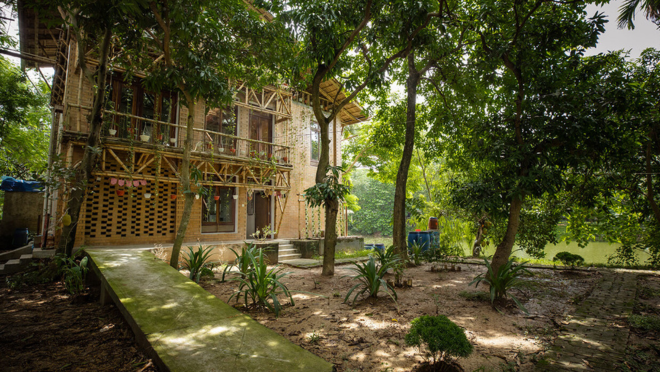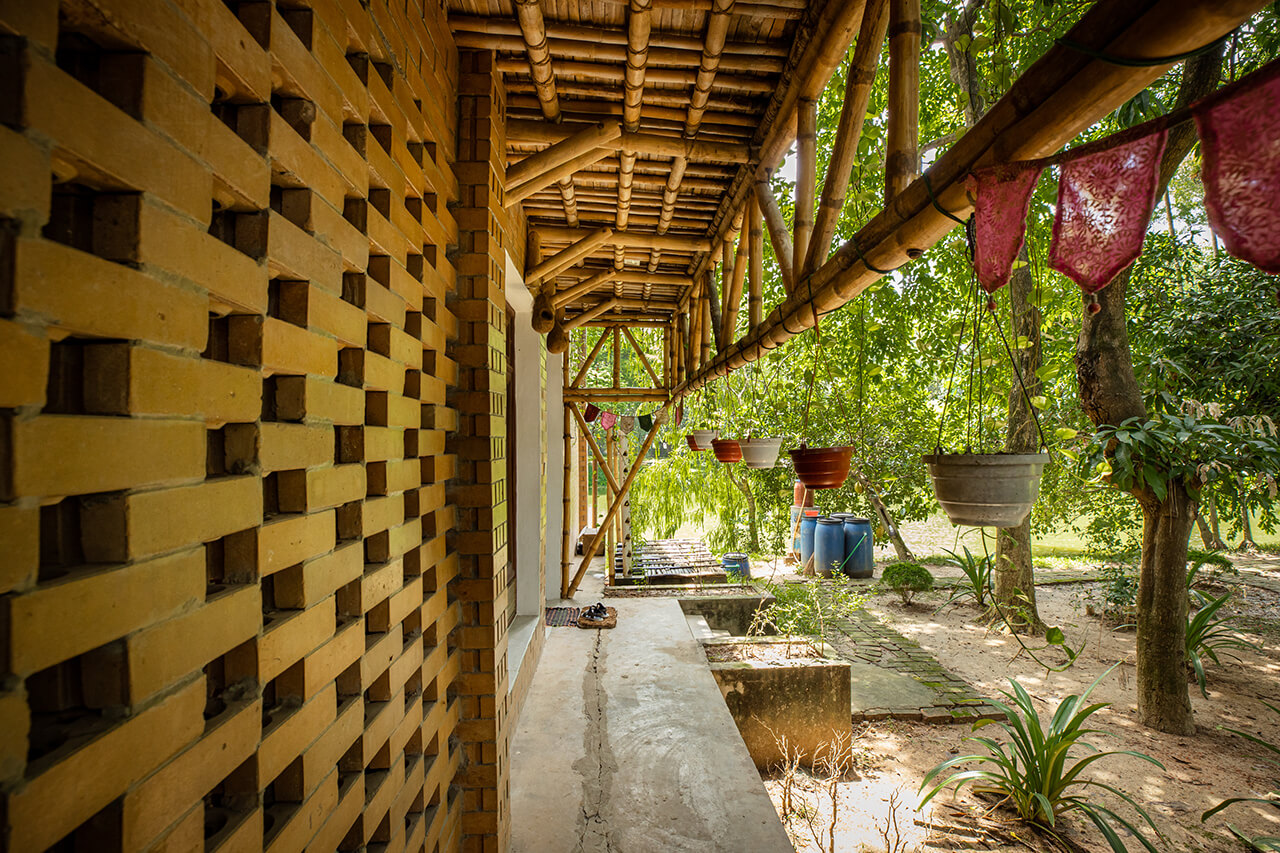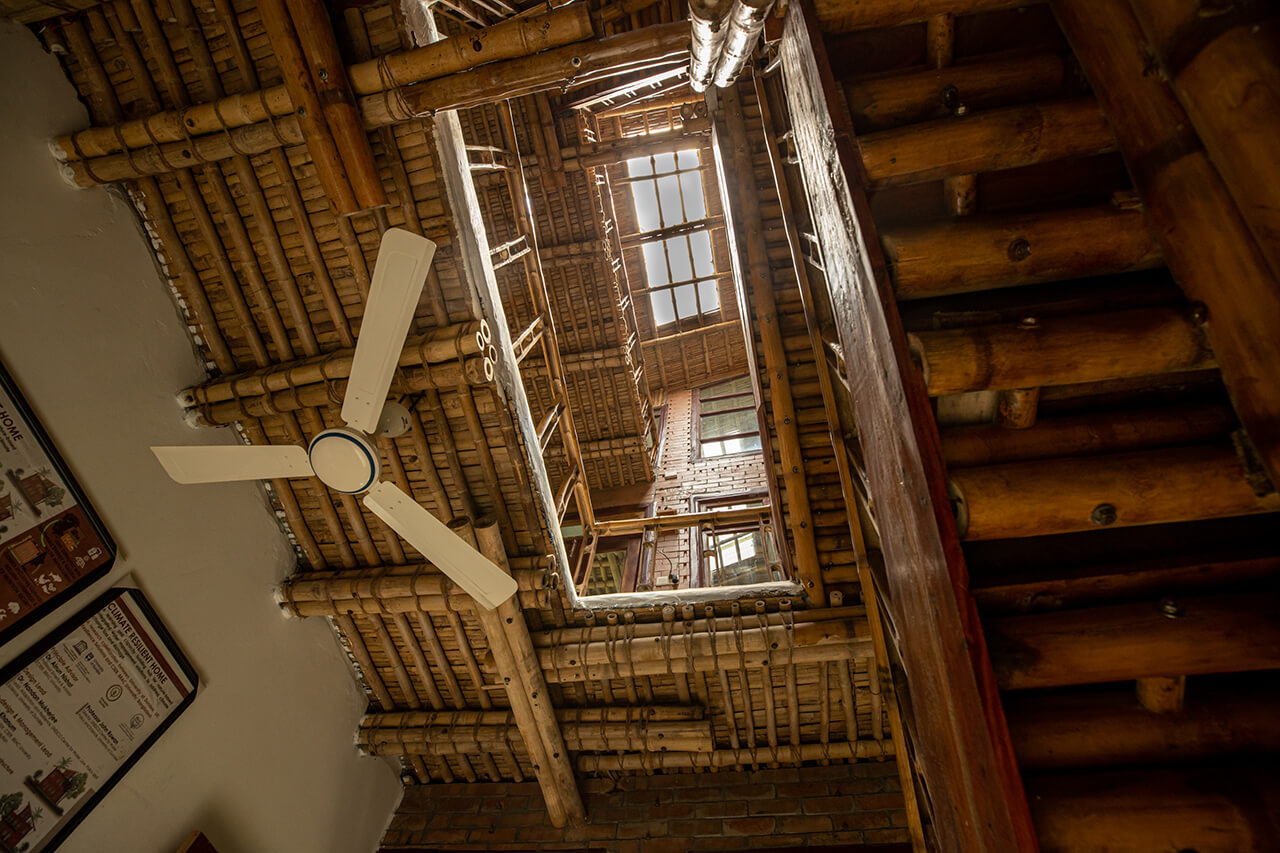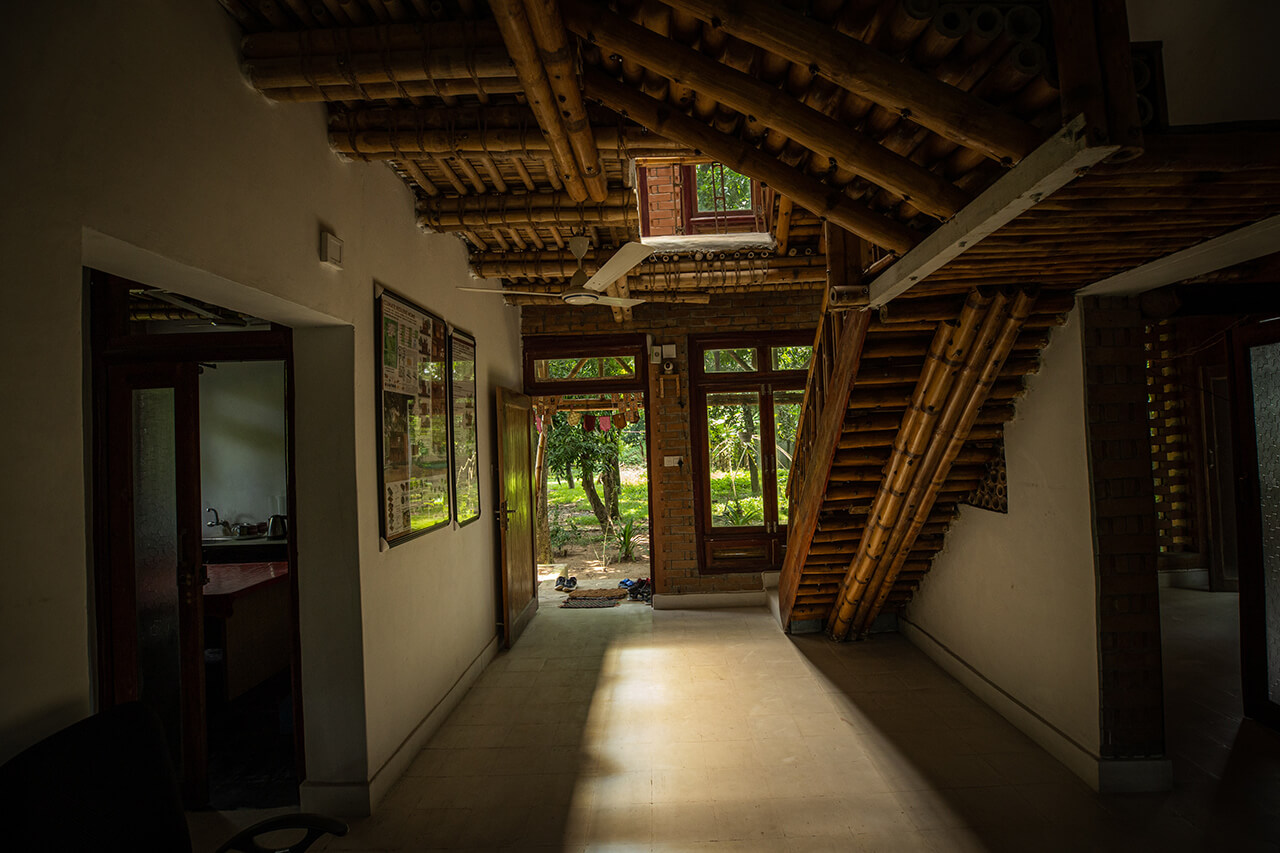A house that floats, breathes and survives anything: Could this be Bangladesh’s future?
A house that floats, breathes and survives anything: Could this be Bangladesh’s future?

In the sweltering heat of a Dhaka morning, when temperatures touch 35°C and humidity creeps above 70%, it is becoming harder to find solace—even indoors. Homes, traditionally seen as sanctuaries, are now traps of heat, humidity, and suffocating air.
With the looming threat of climate change, Bangladesh, the world’s seventh most climate-vulnerable nation, is in urgent need of architectural innovation. The answer may already be here: a house that floats, breathes, and stays cool all year round, writes Nafisa Islam, a Communications Specialist at the Communications Department, BRAC.
This new architectural model, called the amphibious house, is a ground-breaking climate-resilient structure designed with Bangladesh’s rising temperatures, intensifying floods, and worsening air pollution in mind.

Developed by the University of Dundee and Resilience Solutions in collaboration with BRAC University’s Centre for Climate Change and Environmental Research (C3ER), the house has already won the UN’s prestigious Risk Award. But it’s more than just a concept—it’s a living, breathing home for the future.
Floating towards resilience
At first glance, the amphibious house resembles a picturesque rural home, complete with bamboo details and sunlit interiors. But beneath its surface lies a foundation built to float. As floodwaters rise, a cavity underneath the steel-framed base fills with water, triggering flotation blocks to gently lift the house, much like a pontoon. Anchored by four vertical posts, the house remains stable even when afloat—preventing it from drifting away with strong currents.

For a country where monsoon floods regularly trap families for days, this is not just innovative—it’s lifesaving. In August this year, flood victims in northern districts were stranded in waterlogged homes for up to four days. A house like this, equipped with essential services like clean water, food production, and electricity, becomes more than shelter—it becomes survival infrastructure.
Staying cool in a heating world
One of the most revolutionary features of the amphibious house is its temperature-regulating capacity. Constructed using earth blocks, rather than traditional fired bricks, the house naturally maintains an internal temperature of 26°C year-round. Earth blocks “breathe,” allowing for self-ventilation and mimicking the human body’s thermoregulation system. This passive cooling is particularly critical as Bangladesh braces for more heatwaves—some exceeding 42°C—causing school closures, road damage, and heat-related illnesses.
The use of earth blocks is not only thermally efficient but also economically and environmentally sound. These blocks are cheaper, stronger, and significantly greener than traditional bricks, which are fired in kilns that emit enormous amounts of carbon dioxide. With around 7,000 brick kilns in the country contributing nearly 17% of national CO₂ emissions, the shift toward low-carbon materials is a necessity.
A breath of fresh air
Air pollution in Bangladesh is among the worst globally. In Dhaka alone, brick kilns release 1.8 million tons of carbon dioxide and thousands of tons of toxic pollutants each year. Children and the elderly are especially vulnerable, with one in five premature infant deaths linked to air pollution.

The amphibious house tackles this head-on. Its low-carbon bricks are made without firing, using a chemical reaction between clay soil, sand, and lime that absorbs carbon dioxide instead of emitting it. This process not only makes the bricks stronger but helps reverse the carbon damage done by conventional construction. While countries like Denmark and the US have already scaled up low-carbon brick production, Bangladesh still faces challenges in policy, market education, and financing.
Food, water, and power: Built in
Beyond protection from climate extremes, the amphibious house is designed for self-sufficiency. Residents can grow food using indoor permaculture setups, outdoor aquaponics systems, and even raise poultry. Rainwater harvesting allows storage of up to 17,000 litres, which is treated for use. Electricity is generated using a 5 kW solar panel system, with off-grid battery storage and the potential for wind turbines or solar concentrators to supplement supply.

Walls are painted with breathable clay paint, and carbon tiles line the ceiling, helping to regulate heat and improve energy efficiency. Even the bamboo used in construction is sustainably treated with boric acid and borax—non-toxic salts that make it resistant to termites and fungi.
From Mughal inspiration to modern innovation
Interestingly, the ideas behind the amphibious house are not entirely new. Bangladesh has a rich history of “cool” architecture, such as the 17th-century Tahkhana Complex in Chapainawabganj, designed for thermal comfort long before electricity. These structures relied on cross-ventilation, water bodies, and strategic orientation to maximise wind flow and minimise heat. The amphibious house blends this traditional wisdom with cutting-edge climate science.
A scalable solution—or still a dream?
With a price range of Tk5–25 lakh ($4,000–20,000), the amphibious house is actually cheaper than many conventional homes in Bangladesh—costing less than half per square foot and 30% less than a typical tin-shed house. Yet, widespread adoption remains a hurdle. The low-carbon bricks used in the house are heavy and require factory-based production. Without significant policy support and investment in manufacturing, scaling this technology will be difficult.

Nevertheless, the potential is global. The box-style design is compatible with housing styles across continents. While Bangladesh uses jute fibres in its bricks, other countries can use their own locally available materials, making this an adaptable model for other climate-vulnerable regions in the Global South and beyond.
A home for the age of climate crisis
As the planet teeters on the edge of what the UN Secretary-General has called “global boiling,” climate-resilient housing is no longer a luxury—it’s a necessity. The construction industry contributes more than one-fifth of global emissions but also holds the power to offer bold solutions.
The amphibious house is not just a technological marvel rather it could redefine how we live in a changing world. For Bangladesh, and possibly the rest of the world, it may just be the house of the future.


